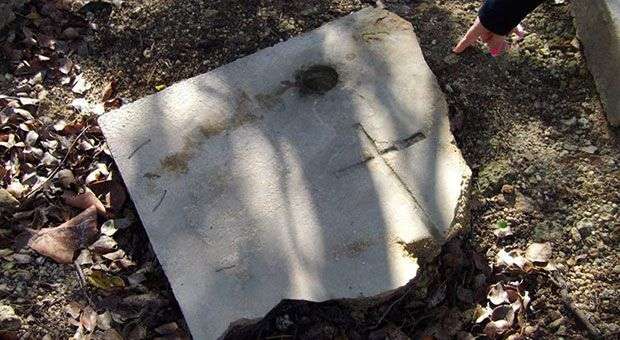In the nearby area of Mariel’s Special Development Zone (ZEDM by its acronym in Spanish), catalogued as one of the biggest investment projects in Cuba, there is an attractive past capable of attracting the attention of spectators and of making specialist fall in love with it.
It just began as one of those local stories that come up during conversations and call the attention of the curious. Today, it is a fact, a proven fact: there is a Chinese cemetery in Mariel.
The necropolis, which covers an area of 11 per 30 meters, is close to an aboriginal settlement from centuries ago but now it is in between the construction works of the Mariel harbor.
“After a long time without visiting this place, we went there at the beginning of the constructions in the development area in order to preserve patrimonial goods. As a result of an evaluation process, we undertook the study of the Chinese cemetery, along with the participants at the Archeology workshop held in this municipality from December 2 through 14, 2013”, explained Edel Mayol Bersach, a historian from Mariel.
So far we have located 12 tombs belonging to a graveyard created in the 20th century and made up of false cement vaults; most of them desecrated.
“There are Chinese inscriptions on the edges. In addition, we have found a group of elements we assume are tombs, the floor of a chapel perhaps and evidences of a wharf, all of them elements that could belong to a cemetery built in the 19th century”, affirmed the specialist.
Looking back
From the middle of the 19th century there used to be a quarantine station in Mariel’s bay for slaves and the crew of ships that ended their trips in Havana, the stage of auctions.
“Due to the lousy hygienic conditions of their travels and stay, many of them got sick and died and were buried in a near cemeterybuilt for that purpose”, explains Mayol and adds:
“As a result of the opening of Chinese migration, in response to the abolition of slavery, until 1874, most of the people that entered Mariel’s quarantine station came from that Asian country. We estimate that about 29 000 colonists had been in quarantine in that place”.
In the 20th century, around 1926, the quarantine station became a hospital for dug addicts, and it was mostly attended by Chinese people. The finding corresponds to the cemetery of that facility.
“We want to improve the conditions of this area to continue our work, but for that we need material support”, noted the historian, who is looking forward to finding the cemetery from the 19th century. However, this might be a difficult task.
“We have only located a wall, built about 1865 in order to isolate the quarantine station from the rest of the area. We haven’t seen any skeletons, or the walls defining the limits of the cemetery or the limits that divided it in half for Catholics and Chinese. We haven’t found any crosses –because most Chinese were not Catholics–, nor any vaults given that by that time the people in Cuba didn’t know about cement.
Panamá, Peru and Cuba were the main destination points for Chinese migration to Latin America. There are cemeteries in those countries, but the oldest one preserved dates back to 1883. We want to give evidence of anineteenth-century cemetery here”, he noted.
Just as this finding emerged from public imaginary and speculation and gained a space in the history of the municipality of Mariel and Cuba, the efforts by these groups of spelunkers and historians could make this dream come true, of course, with the material support it demands.
By: Susana Alfonso Tamayo
Wall separating the cemetery and the quarantine station from the population










